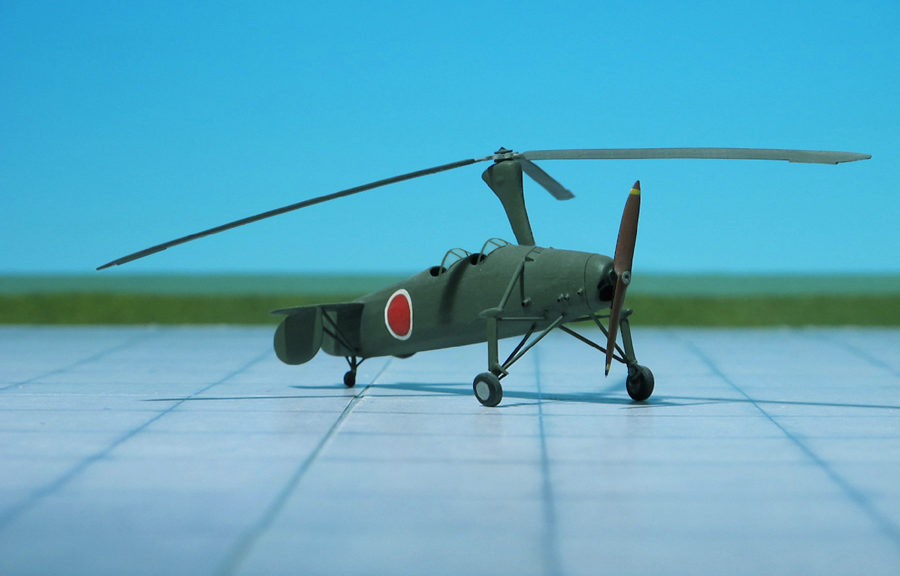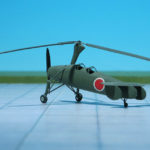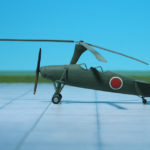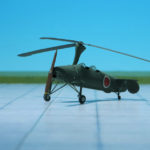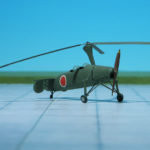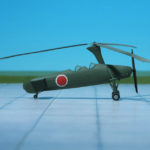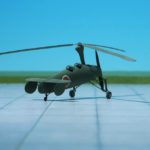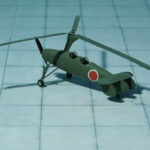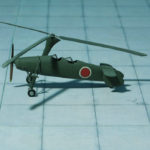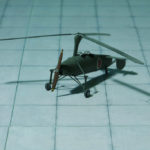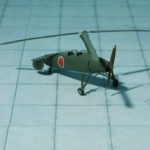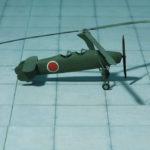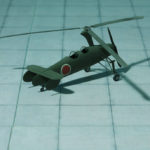TYPE: Autogyro, reconnaissance, observation
ACCOMMODATION: Crew of two
POWER PLANT: One Argus As 10c air-cooled engine (Ka-1) or Jacobs L-4MA-7 air-cooled radial engine (Ka-2), both rated at 240 hp
PERFORMANCE: 103 mph
COMMENT: By order of the Imperial Japanese Army (IJA) the Kayaba Industry developed an autogyro designated Kayaba Ka-1 for reconnaissance, artillery-spotting, and anti-submarine uses. The design based on an American Kellet KD-1A, which had been imported to Japan in 1939, but which was damaged beyond repair shortly after arrival. Kayaba Industry was tasked by the IJA to develop a similar machine, essentially a repaired Kellet KD-1A but powered by a German Argus As 10c engine and shared similar aspects to the German Focke-Wulf Fw 61, which was first flown in 1936, but only about 20 were produced.
The first Kayaba Ka-1 took off from Tamagawa Airfield in May 26, 1941. In the following Army trials, performance was deemed excellent. Originally, it was planned to send the Ka-1 to spot for the artillery units based in mainland China, but the change of the course of war in that theater rendered those plans meaningless. Instead, a few Ka-1 were sent to the Philippines to perform the duties of liaison aircraft as replacements for the Kokusai Ki-76. Soon, an improved version with a Jacobs L-4MA-7 radial engine was on the production line as Kayaba Ka-2. After some time the IJA finally decided on the best use of these unique aircraft, and the majority of Ka-1 and Ka-2 were pressed into service as anti-submarine patrol aircraft. Pilot training for this duty started in July 1943 with the first batch of 10 pilots graduating in February 1944; followed by another batch of 40 pilots in September 1944.
Originally, the plan was to deploy the Ka-1/Ka-2 from 2D-class cargo ships to spot enemy submarines, but these ships turned out to be too cramped for operations; therefore the Ka-1/Ka-2 unit was assigned to the Army-operated escort carrier Akitsu Maru from August 1944 until her sinking in November 1944. From 17 January 1945 ASW patrols were resumed from an airstrip on Iki Isaland with a maintenance base located at Gannosu Airfield in Fukuoka prefecture. ASW patrols also started from May 1945 from Izuhara airfield on Tsushima Island. These missions helped to protect one of the last operational Japanese sea lanes between the ports of Fukuoka and Pusan. Eventually US carrier-based aircraft began to appear even in the Tsushima Strait, so in June 1945 the Ka-1/Ka-2 units were relocated to Nanao base on the Noto Peninsula, in the Sea of Japan, operating from there until the end of the war. The Ka-1/Ka-2 did not directly sink any submarines during the war however, they were well regarded for issuing submarine warnings
A total of 98 Ka-1 and Ka-2 airframes were produced by the end of war, of them 12 were destroyed before being delivered to the IJA and about 30 never had an engine installed, about 50 were delivered to the IJA, but only 30 were actually deployed. Some sources have stated that 240 were built, but this cannot be verified (Ref.: 24).
